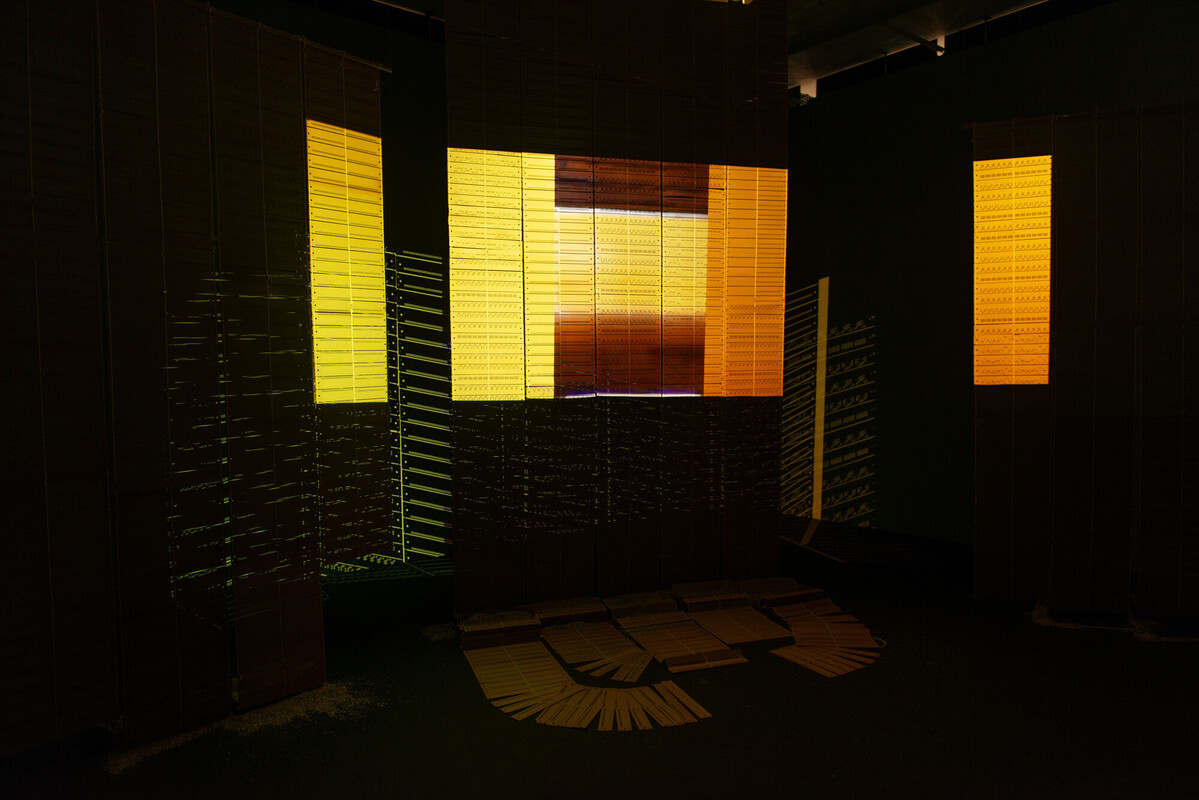
Senga Nengudi
It is from two works conceived in a period of almost thirty years, the triptych Masked Taping (1978–-1979) and the video installation Warp Trance (2007), that Senga Nengudi responds to the curatorial provocation of the 35th Bienal – choreographies of the impossible. Of undeniable historical relevance, her works promote the radical re/de/composition of the choreographies with which the implications between visual arts and politics were elaborated. In the context of her early production, the artist’s dive into abstraction transcended the symbolic ecology that surrounded what was recognized as African-American art, and her gesture demanded that the arts environments be affected by what was presented outside the limits established by the categories of representation.
Nengudi invests in collective practices, engagement strategies, territorially situated aesthetic interventions and in what she defines as abstracted reflections of used bodies.1 In her research into ephemeral materials that are deeply rooted in everyday use, such as the second-hand tights from the famous R.S.V.P. (1997/2003) installation, or the white adhesive tape with which the artist masks her body in Masked Taping, Nengudi works on the multiple uses of transformed matter. In the performance, the body in intimate movement with ordinary matter updates the dimension of the rite, and one perceives the Masked Taping triptych as the presentification of a trace of ancestral memory, the artist dancing to embody a transcultural heritage. In Warp Trance, the profound implication of the material used with the social field persists; this time, it is the machine that dances and operates the modification of matter. Designed on Jacquard cards, an invention that revolutionized the patterning of fabrics, the work opens a gap of images in initially noisy abstract compositions, which acquire rhythm, sonically packing the overlapping of textures and, finally, of colors. We experience the duration of the making of the thread into fabric, in poetic dimensions, as a kind of sensual reflection on time.
cíntia guedes
translated from Portuguese by philip somervell
Senga Nengudi (Chicago, IL, USA, 1943. Lives in Colorado Springs, CO, USA) is the winner of the Nasher Prize for Sculpture 2023. Recent solo exhibitions include Dia Art Foundation (Beacon, NY, USA), Philadelphia Museum of Art (PE, USA), Denver Art Museum (CO, USA), Museu de Arte de São Paulo (Brazil), Lenbachhaus (Munich, Germany), Henry Moore Institute (Leeds, UK), Baltimore Museum of Art (MD, USA) and Institute of Contemporary Art, Miami (USA). Recent group exhibitions include Museum of Modern Art (New York, USA), Hammer Museum (Los Angeles, USA), Migros Museum für Gegenwartskunst (Zürich, Switzerland), Mori Art Museum (Tokyo, Japan), Walker Art Center, (Minneapolis, MN, USA), Museum of Contemporary Art (Chicago, IL, USA), National Gallery of Art (Washington, DC, USA), Brooklyn Museum (New York, USA) and the 57th Venice Biennale (Italy).
1. See this concept in “Statement On Nylon Mesh Works,” 1997, published in Senga Nengudi – Topologies. Exhibition catalog. Munich; São Paulo: Lenbachhaus; MASP, 2020, p. 117.

 Português
Português